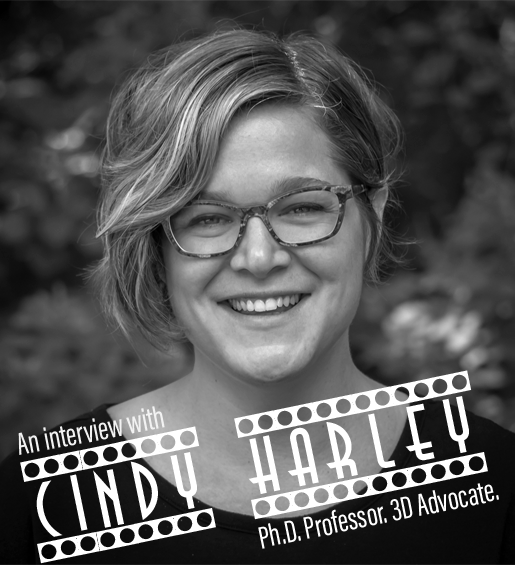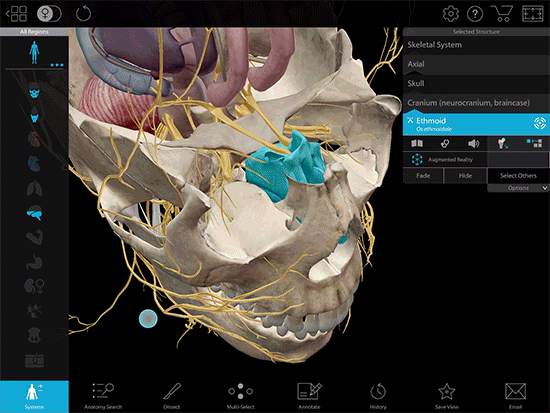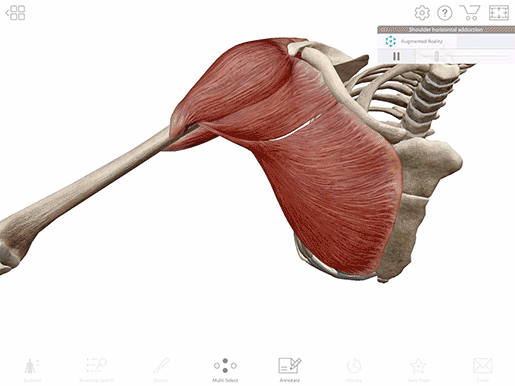Having Fun While Teaching A&P: An Interview with Cindy Harley, Ph.D
Posted on 8/9/18 by Lori Levans

Cynthia Harley is the author of Courseware’s two-semester A&P course. We sat down with Cindy to hear about her approach to the course and how instructors and students can make the most of it!
Name: Cynthia Harley, Ph.D.
Position: Assistant Professor, Metropolitan State University, St. Paul, Minn.
Classes you’re teaching this fall: A&P 2, Comparative Physiology
Favorite A&P teaching moment: I love those ‘Ah ha!’ moments with students but I get a huge kick out of getting my crazy ideas to work. A few semesters ago, I got really interested in making physiology games and spent a good amount of time developing a physiology card game. The students learned so much and had a great time. Several wanted a copy to take home for fun!
Favorite organ: As a neuroscientist, of course I love the nervous system but I also have a fascination with the heart. The Frank-Starling effect is one of the most beautiful things in all of physiology—it makes it so that your heart automatically pumps harder when you are active.
Favorite article of clothing with anatomy on it: I have a shirt with anatomical drawings on it.
Favorite saying: "It is easier to think outside the box when you don’t know where the heck the box is."
What’s the story behind the course you made for Visible Body’s Courseware?
When I first taught A&P in a traditional way, using a traditional textbook, I hated it. Basically [I] was looking forward to the day where I would be moved out of teaching those courses.
But in starting to figure out how to try to help students learn better and to make it less painful for them and myself, I discovered Visible Body and discovered we could do some creative stuff using all of the visual 3D content.
As an instructor, you have to get all the information across and it’s hard, but it doesn’t have to be.
I know that for students, if you’re having fun with the material, you will learn and it will stick better. That’s what this course is all about—my desire to make things stick.
How would you describe the structure of your course?
I made a two-semester course to share with instructors. In semester 1, we start with anatomical terminology. The anatomy part of A&P is memorization, we know this. So I teach the terminology because then students can break those terms down and have an idea of what that instructor is talking about, or they can at least make a good guess.
After anatomical terminology is cells, then bones and muscles, then neurons. We spend some time on the integument and homeostasis as well.
Because of the amount of terminology, I feel that that’s enough material for the first semester. As educators, we love to talk about Bloom's taxonomy, and it’s helpful to start with low-level things, like the names of bones. So the first semester is lower-level Bloom’s material.
The second semester is physiology-heavy, so that’s more application, diagnostics—really talking more about how things work. It’s more high-level Bloom’s for circulatory, respiratory, digestive, urinary, and reproductive material.
Over the year, I want to see growth in a student. I think that overall they should be really growing in their ability during that time. To me, this two-semester course helps to achieve that goal.
What’s your favorite thing about the course?
The thing I love about it is that it's fun and effective. It has very clear learning outcomes. I included in the Course Resources section [of the Courseware course] a sample syllabus for each semester, which includes learning outcomes for each unit. I also included learning objectives in most of the assignments. What you want the student to learn is very clear.
Also, there are multiple modalities: students can read Visible Body, interact with videos, move the models around, and that gives them a couple of different ways to learn.
 Video footage from Human Anatomy Atlas.
Video footage from Human Anatomy Atlas.
With the labs and quizzes, they can check their understanding and take that factual memorization a step further by applying concepts.
I like the second semester more—the physiology is really fun. That’s my favorite part.
How would you describe your approach to helping students learn?
I have a colleague who uses hieroglyphics to teach math. That takes students out of their comfort zone. That idea is really meaningful to me. So I added a lab that includes a game from Geniverse that uses dragons to teach genes and traits. Yes, dragons! If you get people to step back for a second, they’re going to have a really good time and be able to learn that information, and apply it to new situations. It takes them away from pre-conceived notions which may be wrong.
You have expressed that unique approach by the looks of this course—one unit is called "Cell Membrane: Insane in the membrane" another is "Reproductive System: Do you come from the land down under?" How would you describe your style?
It took me awhile to realize that it was perfectly OK for me to show my personality during my courses. At first I took myself too seriously. I was uncomfortable, as were the students. Eventually I let my guard down and started having more fun with it. From lectures entitled “Hello Kidney” and “The Reproductive System: a.k.a. Where The Sun Don’t Shine” to labs involving games to illustrate cooperative binding to in class activities involving acting out muscle contraction—we have fun. The students are learning more than they ever did, I think because the environment is less intimidating. Their opinions of me have only increased, and I get letters thanking me for helping the material stick when the student took the MCAT/PCAT/etc. It's wonderful.
How does Visible Body help you achieve your teaching goals?
I love using active learning techniques and Visible Body really helps me to do that. Another strength of Visible Body is that it puts your material on your student’s phone. They can look at their class material in a waiting room, on the bus, on their lunch break at work, or in the comfort of their own home. It is so much better than lugging around a heavy book.
This course is meant for undergrads who have little or no A&P instruction?
My students have one prerequisite. It used to be a bio course but we now we have a one-semester chemistry course, so that’s all they have walking in. My goal is to take them from a very early science student and be able to send them out the door seeing themselves as a scientist.
Sure, I get nursing majors who say, “I’m not a science person,” to which I say, “Yes you are, you just don’t know it yet.” I want to take out the intimidation of science. I see with some folks, especially women and minorities, that they don’t think they can do it. They think it’s something that “smart people” do. Beyond teaching them the thought process that helps them in the path to their career, they learn that they are capable.
How would you describe your labs?
The labs add interaction and inquiry. They allow students to move through the material at their [own] pace and ask questions when they hit road blocks. The students experience the concepts and this enables them to internalize them. It is, of course, important to me that the students learn, however I want them to do so in a fun, non-intimidating environment. I want them to experience the joy of learning (especially learning science).
So my labs are interactive, fun, and intimately related to the lecture learning outcomes.
 Video footage from Human Anatomy Atlas.
Video footage from Human Anatomy Atlas.
Now, I totally get it, using someone else’s stuff is like using someone else’s toothbrush: you want your own. So you have to customize the content to match your style. Luckily, all the labs are in Word documents, so they are easy to modify.
I learned in my first year of teaching that I am not a lecturer, and 30 minutes in I get really boring (for me and students)! I try to break things up and make labs integrated with the course. I want them to practice what they learn in the classroom. Because of this, it’s important that labs match the same learning outcomes you use in the lecture so you can take the topics out to that conceptual level.
What are some of your favorite labs?
For me, it’s part of the bone lab that has to do with forensics—why and how can you tell race and gender. Through this lab we found that our female skeleton has a masculine skull. The pelvis is more obvious in terms of size and shape. This lab leads to neat conversations, like “What would your skull look like given your background?” For the past few years my students have loved shows like Bones, CSI, and the like, and because of this I tend to work in little bits from crime or medical dramas. I know that this is a more ‘fuzzy science’ but it is a way for students to practice their anatomical knowledge in a way that’s fun.
What are some tips for instructors?
I think they should use what I’ve created in Courseware as a starting place for their course. The one thing you have to consider is: what is the one thing I want the students to walk out of the lab or class knowing? Then go from there. The great thing is you are able to edit the labs, the outlines, everything—that’s the beauty of Courseware. You need to make the course match your desired outcomes. Have fun and be creative!
Let students work together. Use lab time as a time to talk to students and get to know them and see where they’re struggling. Allow them to teach each other.
What are the "guided notes" for each unit?
I decided to provide outlines for each unit instead of slides. It gives instructors and students an idea of the main concepts they should cover during each unit. Other people’s slides are hard to use (have you ever used a publisher's slides?). Instructors can hand them to students or use them to create slide shows that work for them.
What are some things you’ve learned over the years as an instructor?
One of the things that helped me so much in my teaching was to try new techniques that I was afraid of. When trying to make your course better, some things will work and some won’t, but you never know if you don’t try. In the end, it is okay to approach courses with the idea that they are a playground for pedagogy. This makes us excellent instructors as well. And you never know what crazy things will work!

Video footage from Human Anatomy Atlas.
What are some tips for students?
It’s definitely practice, so you should have fun with it and reflect back on what you’ve learned. And there’s always the opportunity to learn!
Funny story, I was in the supermarket a few weeks ago to buy steak and I saw that on the label it said “teres major” steaks. Butchers are anatomy dorks too! And I thought, "teres major, is it going to be tender on a cow?"
There are so many learning opportunities and practice opportunities that you can take. That’s what makes A&P such a fun topic: it’s something you see and feel every day. It doesn’t matter if you go into medicine or nursing; you have a body and you’re going to be exposed to it every day no matter what your goals are.
Any parting thoughts?
I would say that my overall goal is to provide a scaffold with this Courseware course—a structure to start from. It’s not just for students to be clear on what they can get out of the class today. But that being said, the great thing with the Courseware course is that even if you miss class, you’ll know where you have to catch up.
I also think the course helps the instructor because if you’ve got that framework, you can always modify, add, subtract, make it relevant. If students are confused—post a YouTube video, or direct them to additional materials. You can evolve the course over time. Also, in some situations it’s really intimidating to be given a book and be asked to teach a course that’s not as familiar. I teach health and healthcare professionals—I’m not one, so I have had to determine what is important to my students. This involves asking a lot of health professionals and instructors in their desired programs and making some judgement calls. However, needs can change and programs can be different. You can adapt the course to your needs and the needs of your students.
We used a lot of images from Visible Body and open source resources. Since we provide Word docs, it’s really easy to add your own favorite images. The important thing is to be able to tailor the course and make it really relevant and fun at the same time.
Professor Harley created the complete course in Visible Body Courseware. Contact our Education Team for a free instructor trial code and try her 3D interactive course for yourself!
Learn more about Visible Body Courseware and how it can transform the ways your students learn and understand anatomy.



